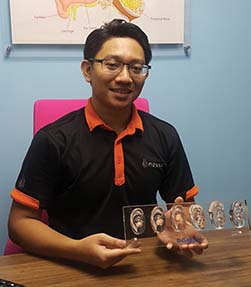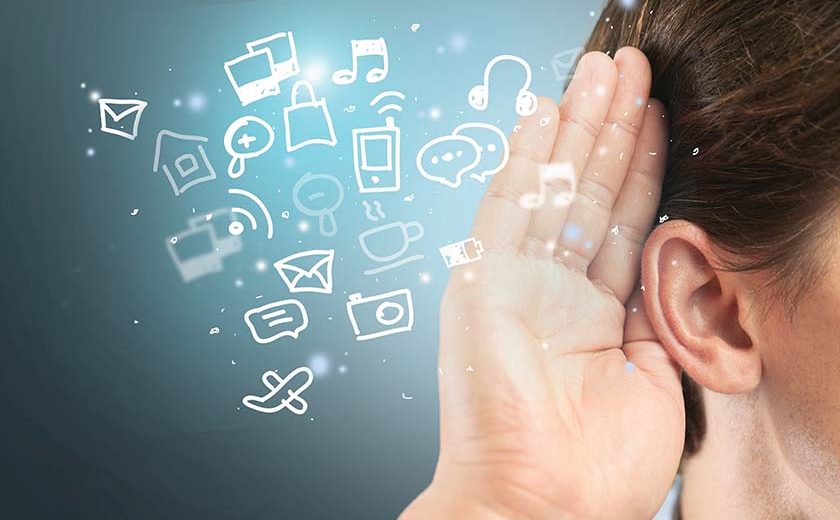World Hearing Day falls on March 3 each year and the day advocates and promotes hearing care and awareness throughout the world.
According to the World Health Organisation (WHO), there are some 360 million individuals living with hearing loss conditions. This is over 5% of the world’s population and of that figure, an estimated 32 million individuals are children. In Malaysia, as the country reaches the year 2020, a local university study revealed 16% from 3.8 million senior citizens will experience some degree of hearing loss. In 2020, senior citizens will constitute 11% of the country’s population.
Famed 20th-century activist and educator Helen Keller achieved a remarkable career championing the deaf and blind. She once said, “Blindness separates people from things; deafness separates people from people.”
If you have hearing loss or think you may have a hearing condition, all is not lost. Technological advancements have allowed those affected to lead a normal life but early detection and treatment is key. Read on to find out how you may help yourself or someone you know as well as the factors involved in hearing loss among babies, teenagers, workers and senior citizens.
Hearing Loss and Deafness
A person who is not able to hear as well as someone with normal hearing – hearing thresholds of 25dB or lesser in both ears – is said to have hearing loss. Hearing loss may be mild, moderate, severe or profound. It can affect one ear or both ears and leads to difficulty in hearing conversational speech or loud sounds.
‘Hard of hearing’ refers to people with hearing loss ranging from mild to severe. People who are hard of hearing usually communicate through spoken language and can benefit from hearing aids, cochlear implants and other assistive devices as well as captioning. People with more significant hearing losses may benefit from cochlear implants.
‘Deaf’ people mostly have profound hearing loss which implies very little or no hearing. They often use sign language for communication.
 What are decibels (dB)?
What are decibels (dB)?
Decibels (dB) measure the intensity of sound from 0dB which is the faintest sound the human ear can detect to the noise of a rocket during launch which can exceed 180dB.
Nessa Malaysia Senior Audiologist, Hakim Zin said sound exposure that was typically more than 85dB is dangerous which means things like motorcycles, headphones and lawnmowers have potential to lead to permanent hearing loss.
Causes of Hearing Loss and Deafness
The causes of hearing loss and deafness can be divided into congenital causes and acquired causes.
Congenital
Congenital causes may lead to hearing loss being present at or acquired soon after birth. Hearing loss can be caused by hereditary and non-hereditary genetic factors or by certain complications during pregnancy and childbirth, including:
- maternal rubella, syphilis or certain other infections during pregnancy
- low birth weight
- birth asphyxia (a lack of oxygen at the time of birth)
- inappropriate use of particular drugs during pregnancy, such as aminoglycosides, cytotoxic drugs, anti-malarial drugs and diuretics
- severe jaundice in the neonatal period which can damage the hearing nerve in a newborn infant.
Acquired
Acquired causes may lead to hearing loss at any age, such as:
- infectious diseases including meningitis, measles and mumps
- chronic ear infections
- collection of fluid in the ear (otitis media)
- use of certain medicines such as those used in the treatment of neonatal infections, malaria, drug-resistant tuberculosis and cancers
- injury to the head or ear
- excessive noise including occupational noise such as that from machinery and explosions
- recreational exposure to loud sounds such as that from use of personal audio devices at high volumes and for prolonged periods of time and
- regular attendance at concerts and sporting events
- ageing in particular due to degeneration of sensory cells and
- wax or foreign bodies blocking the ear canal.
How hearing loss affects:
Babies
Hakim said hearing loss can be identified from birth. This is why the Malaysian government has implemented a compulsory neonatal hearing screening at all public hospitals. When a baby does not pass the hearing test, follow-up tests are required to confirm hearing loss.
“The two hearing tests for babies are the Auditory Brainstem Response (ABR) test or Otoacoustic Emissions (OAE) test.”
ABR measures the hearing pathway up to the lower part of the brain while the OAE assesses the cochlear function.
Hakim added that babies are tested from day one to three months, six months and till they turn 1 years old. This is to further ascertain if hearing conditions are improving or worsening.
Early detection is crucial among babies as hearing loss will impact brain development. Hakim said sound input is needed to acquire words and ultimately language. But, with the absence of sound, babies will have trouble learning a language and this may affect other areas of development as they grow.
Teenagers
Among teenagers, he said congenital causes were out of the picture as it would have been detected during the teen’s early childhood.
“Among other things, acquired causes among teenagers are primarily caused from noise exposure to entertainment and audio devices. According to NIOSH (National Institute of Occupational Safety and Health) Malaysia, headphones that are cranked up to its maximum volume (around 100 to 150dB) are dangerous and one should not hear such volumes exceeding three minutes each day.”
As the accepted sound starts from 85dB, anything that goes beyond that is dangerous and teenagers should not be exposed to it for long periods of time.
If teenagers have hearing loss issues, Hakim said it was imperative to conduct hearing tests to prevent further damage. As the issue can only be handled best on a case-by-case basis, he said teenagers fitted with hearing aids should not be ashamed or embarrassed by it as the device helps in slowing down any further potential hearing loss problems.
Workers
“Those who work in noisy environments such as construction areas, contact centre employees and even teachers are prone to have hearing loss if necessary precautions are not taken into consideration.”
According to Malaysia’s Department of Occupational Safety and Health (DOSH), Hakim said employers should provide PPE (personal protective equipment) for employees working at loud and noisy environments.
“The sounds at these places could go well beyond 120dB due to noises from heavy machinery. With PPE, employees should wear both ear plugs and mufflers which reduces sound between 35 and 40dB.”
Employers should also recommend annual hearing tests for all employees. If hearing loss is detected, there are three tests which are conducted to confirm such a condition. The tests are applicable for all adults, teenagers and senior citizens.
Senior Citizens
Hakim said hearing loss is often detected in those aged 55 and above.
“Three major reasons for hearing loss are medications taken over the years, working experience and accidents.”
He also said plenty of people in this age group tend to avoid doing hearing tests or getting a hearing aid as they dislike the stigma associated to hearing aids and the elderly.
“But, by not wearing a hearing aid. The elderly will end up feeling isolated from regular conversations that include family and friends. On top of feelings of isolation, depression may also kick in.”
Hakim added it was always best to seek awareness, attend to hearing tests and ultimately, treatment, regardless of age group or work environment, as this will improve communication and quality of life.
Hearing Myths Debunked
Wearing headphones while jogging or doing physical activity may conclude in hearing problems in the long term.
A: A safe volume (between 50 and 60dB) will not conclude in hearing problems in the long term.
Hearing aids make everything sound too loud.
A: Hearing aids are personalised and fine-tuned according to a user’s needs. It does not make everything sound too loud.
Hearing aids are just too expensive.
A: Hearing aids can range from basic to full feature devices. There are both cheap and expensive hearing aids.
Hearing aids are ugly and only for old people.
A: There are plenty of almost invisible hearing aids known as CIC (completely in canal) and those that are slightly visible such as ITC (in the canal) and devices that are placed at the back of the ear. Hearing loss can be detected from birth and as such, it does not only affect the elderly.
Hearing aids will restore my hearing to normal conditions.
A:It does not restore but merely aids one to hear better.
I only have trouble hearing certain sounds, not hearing in general, so I don’t need hearing aids.
A: These are early signs of hearing loss and requires tests and treatment.
Wearing two hearing aids are not necessary.
A: If you are experiencing hearing loss in both ears, it is best to wear hearing aids for both ears.
You can save time and money by buying hearing aids online or by mail order.
A:Hearing aids are classified as medical devices class type II and should be prescribed by professionals.
Nessa Malaysia is a hearing care provider in Southeast Asia. It has operations in Singapore, Japan and Malaysia with a dedicated team of 17 certified audiologists across Malaysia. Nessa provides different packages that suits different lifestyles, namely Nessa Home, Nessa 2GO and Nessa Remote. Apart from consultations and hearing aid tuning at the centres, Nessa offers personalised home visits and conducts remote-controlled visits from its centre for those staying in remote areas. The smart hearing aids are made for TV, Apple iPhone and compatible with Android devices. Visit www.nessa.my or call 1800 28 1180 for more information..
Sources
World Health Organisation (WHO)
Nessa Malaysia


